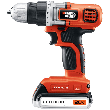Conserving Water in the Bathroom
Written by Lee Wyatt (last updated September 11, 2019)
Everyone uses the bathroom, and as such ends up using more water in that one room than they would normally expect. If you are serious about lowering your water use, then you need to start thinking about conserving water in the bathroom. Believe it or not, there are actually more than enough ways to save or limit water use in the bathroom that you could fill up a book. Here are a few of the simpler (and less expensive) methods that you can begin using today.
- Showers vs. baths. While baths are definitely luxurious and a great way to relax, they also use at least two and a half times the amount of water that is used in a shower. This means that for your average, every day personal cleaning you and your family should use showers whenever possible.
- Time your showers. Even though showers typically use less water than a bath, you can still lower the amount even more. The simplest way to do this is by putting a limit on the amount of time you spend in the shower. While it may be nice to have a really long shower, it can end up wasting more water than you would like. A shower really doesn't need to take longer than five minutes, but if you are looking to "relax" a bit then you can extend it out to no more than ten minutes to keep the amount of water used down as low as possible.
- Low flow. Try to have as many low-flow items as possible installed in your bathroom. This means that your toilet, showerhead, tub faucet, and sink faucets should all be low flow. These low-flow heads and faucets often restrict water flow to no more than 2.5 gallons of water per minute. That means that if you take a ten-minute shower you will end up using only 25 gallons of water. Furthermore, when you use most low-flow toilets, you will be limiting the amount of water to no more than 1.6 gallons per flush.
- Switch it off. When taking a shower, washing your hands, or even brushing your teeth, simply turn off the water when you aren't "actively" using it. For example, after you have gotten your toothbrush wet, turn the water off. When you are showering, or washing your hands, turn the water off after you have gotten wet, and while you are soaping up. After soaping up, turn the water back on to rinse everything off.
You will be amazed at how much water these simple methods can end up conserving in the bathroom. Keep in mind that these are only a few of the methods available. There are dozens of methods that you can use, but it can basically be boiled down to the less water you use, the more you conserve. Use your imagination for more ideas and create some of your own methods that you can use to begin conserving water in the bathroom.
Author Bio
Lee Wyatt
Contributor of numerous Tips.Net articles, Lee Wyatt is quickly becoming a regular "Jack of all trades." He is currently an independent contractor specializing in writing and editing. Contact him today for all of your writing and editing needs! Click here to contact. Learn more about Lee...
Preventing Mold Growth in HVAC Systems
Mold is much more than a simple problem that you can clean up every now and again. If you don't take the proper ...
Discover More
Ultrasonic Jewelry Cleaner
One of the more annoying facts about jewelry is that no matter what you try, they seem to still get dirty. What's ...
Discover More
Properly Painting Your Room
Painting can be a really fun, and simple, home improvement project as long as you know what you are doing. Good thing ...
Discover More
More Home Improvement Tips
Bathroom Shelving
Are you running out of places to put things in the bathroom? Add some shelving to give you room for organization.
Discover More
Remodeling Bathrooms
Is your bathroom looking run-down and out of date? Remodeling can allow you to update the room for a great new look.
Discover More
Installing a Water Efficient Showerhead
Whether you are looking to save money on your water bill, or are more interested in becoming more efficient in your water ...
Discover More

Comments